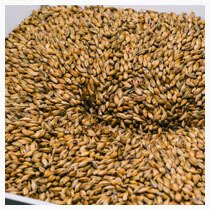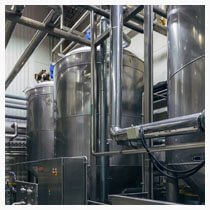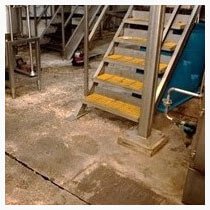Part 3 - Beer Spoilers
Where Can They Be Found?
November 16, 2020

WHERE CAN BEER SPOILAGE ORGANISMS BE FOUND?
All breweries, as part of their microbial plan, aspire to curb the number of opportunities that beer spoilers, essentially bacteria or yeast, have to enter their establishments. As part of a brewery’s Hazard Analysis Critical Control Points (HACCP) plan, the brewer needs to identify the different sources of contamination in his/her establishment and try to prevent access of the microbes. There are generally a few main areas for focus on:

RAW MATERIALS AND ADDITIVES INCLUDING AROMAS
- Water: Consider the source of your water, what treatment it has been subjected to and its storage conditions and temperature.
Preventative action: look at the Certificate of Analysis (CoA) provided by your water authority and where appropriate, analyse regularly the water source for microbial contamination.
- The pitching yeast: Not surprisingly, as a living culture, it is inevitably a potential source to introduce a microbial contamination.
Preventative action: Privilege a reputable manufacturer (Makinen et al 1981) and scrutinise the certificate of analysis (COA). Additional analysis should be considered.
- Yeast slurry: Re-pitching yeast has obvious economic benefits and in some cases taste profile interests and this needs to be weighed up against the increase in risk of introducing a microbial contamination.
Preventative action: Standard QC tests should be applied, such as measuring cell density, viability, and microbiology tests for contamination with wild yeast or bacteria (e.g. Lactic acid bacteria, Dekkera spp and S. diastaticus) prior to deciding whether it can be re-used.
- Malt: An inherent source of microbial contamination. Pay particular attention to the dust control at the point of loading the malt : malt is a notorious source of contamination.
Preventative action: Privilege a reputable manufacturer and scrutinize the COA as well as ensure correct storing conditions.

- Adjunct flavours: (spices, fruit concentrates etc..) should be not over-looked as a potential contamination source especially when they are to be added post boiling!
Preventative action: Privilege a reputable manufacturer and scrutinize the COA. Consider the interest to run microbial analytical tests (Lactic acid bacteria as a minimum and wild yeast as well)
Anything that is added on the cold side of the brew house should be considered as a potential risk. Can you measure it?
THE BREWING PLANT (VESSELS, PIPING, ETC.)
Stainless steel is a commonly used material for brewing equipment. This is because it is easy to clean, highly resistant to corrosion, and it is relatively malleable. Nevertheless, the welding used to build the equipment can cause fissures for bacteria to build up in!! Avoid wood in the production area if at all possible (microbes and wood should be avoided at all costs unless of course it’s for barrel aging). Any surface that comes into contact with wort, beer, or yeast should be cleaned and sterilized on a regular basis. A post CIP treatment quality control should be implemented e.g. simple non-specific ATP testing.

Critical risk zones for consideration
- Wort cooling system (the heat exchanger is a known hotspot due to organic residue build up in the convoluting pipes which are not easy to clean Back 1995)): A wort sample (known as a knockout sample) is often collected from the fermenter prior to addition of the yeast in order to run a “wort stability test”.
- Vessels (fermenter or Bright tank)
- Oak barrels (QC both visual/sensory and microbiological are essential)
- Piping/hoses (NB joints or cracks in piping)
- Implements (including the bottling unit which is a notorious source of contamination with particular attention needed at “bottling head” sites)
- Flash Pasteurisation units
- Conditioned cans/bottles/kegs (particular attention to re-used bottles and kegs)
- “Mobile bottling units” Particular attention should be paid to CIP [Cleaning In Place], piping and the bottling unit post handling of “sour” or “gueuse” beers where normally considered spoilers have been used intentionally for their flavour profiles in order to ensure that subsequent routine beer production is not contaminated.

Measuring Instruments
Measuring instruments such as thermometers, manometers and valves (e.g. Zwinkler valve) should not be overlooked and thoroughly cleaned and sterilised where possible.
Brewing environment
By their very nature, microorganisms are present in the air and often carried along with dust or moisture particles. The risk increases when there is wind and the brewery doors are open!! The floor itself should not be overlooked (Paier and Ringhofer 1997) Don’t forget the threat that insects and other pests can pose and all efforts should be made to keep the brew house as clean as possible. A regular screening (Microbial Sampling Plan) for potential spoiler organisms should be envisaged as part of the sampling control plan so that you know what is going on in your brewery and highlight any points that require further attention. Remember also that the risks differ according to the seasonality both in terms of which organisms but also the sources of contamination.

Different seasons in the year
According to the period of the year, the risks from the different beer spoilers can also be different.
KEY POINTS
• Do not overlook the effect microbial contamination from raw ingredients added to the hot side of the brewery can have effect on beer quality despite the “sterilisation” step of the kettle.
• Privilege reputable suppliers of raw ingredients and look carefully at the Certificate of Analysis. If you do not understand what you see, ask for clarification.
• Regular maintenance of the brewhouse is important with a critical eye on potential sources to harbour a contamination.
• A quality control plan is essential at the critical testing points to monitor for the appearance of any microbial contaminants.
• If the brewhouse does not visually look clean, then it is sure to have an increased risk of contamination problems.
References:
Back, W. Technical and technological prerequisites for ‘cold sterile’ bottling. Brauwelt Int., Vol 15, pp. 192-201 Makinen, V. et al 1981. Bakterielle Kontaminationen im Brauprozess. Brauwiss Vol. 34 pp 173-178 Paier, H.J and Ringhofer, R. 1997. Biologische Betriebskontrolle in der Praxis.





